|
Books Should Be Free Loyal Books Free Public Domain Audiobooks & eBook Downloads |
|
|
Books Should Be Free Loyal Books Free Public Domain Audiobooks & eBook Downloads |
|
Literature |
|---|
|
Book type:
Sort by:
View by:
|
By: F. Anstey (1856-1934) | |
|---|---|
 In Brief Authority
In Brief Authority
Satiric comedy from 1915 about a nouveau riche British family and their nanny who get whisked off to Maerchenland ('the land of Fairy Tales') one evening in a car drawn by storks. The matron of the family, a thorough snob, is crowned Queen of the country by mistake. She is quick to accept her new position and is determined to introduce British social niceties in her realm. And this really is the land of Fairy Tales, with gnomes, giants, a dragon, magic, a fairy godmother and more. Trouble quickly starts to brew as the royal couple and their son introduce things like capitalism and golf... | |
By: F. Berkeley (Frank Berkeley) Smith (1869-1931) | |
|---|---|
 A Village of Vagabonds
A Village of Vagabonds
| |
By: F. C. (Francis Cowley) Burnand (1836-1917) | |
|---|---|
 Happy-Thought Hall
Happy-Thought Hall
| |
By: F. Clifford (Frank Clifford) Smith (1865-1937) | |
|---|---|
 A Lover in Homespun And Other Stories
A Lover in Homespun And Other Stories
| |
By: F. Irene Burge (Frances Irene Burge) Smith (1826-1900) | |
|---|---|
 The Elm Tree Tales
The Elm Tree Tales
| |
By: F. M. Mayor (1872-1932) | |
|---|---|
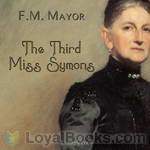 The Third Miss Symons
The Third Miss Symons
Miss Mayor tells this story with singular skill, more by contrast than by drama, bringing her chief character into relief against her world, as it passes in swift procession. Her tale is in a form becoming common among our best writers; it is compressed into a space about a third as long as the ordinary novel, yet form and manner are so closely suited that all is told and nothing seems slightly done, or worked with too rapid a hand. | |
By: F. Marion Crawford (1854-1909) | |
|---|---|
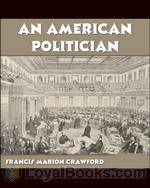 An American Politician
An American Politician
In 1880’s Boston, Mass. the good life is lead according to all the Victorian era societal rules of the New World. Political ambitions and the business of making money go hand in hand. A Senate seat suddenly opens up due to the current junior senator’s unexpected death, and the political machinations to fill the seat begin. Senatorial candidate John Harrington is a young idealist who thinks that fighting for truth and justice, regardless of political affiliation, is the way. But he is told he can’t possibly win because he isn’t partisan enough... | |
 Man Overboard
Man Overboard
Peculiar happenings aboard the schooner Helen B. Jackson when one night during a storm, the small crew found themselves diminished by one. Somebody had gone overboard, and it was surmised that it was one of the twin Benton brothers. But oddly enough, it seemed that the ‘presence’ of the missing twin continued to exist on board during the following weeks. For example, one extra set of silverware was found to be used after each meal, but nobody claimed to be using them. What then did happen that stormy night, and which brother, if indeed it was one of the brothers, was the man who went overboard? | |
 The Upper Berth
The Upper Berth
| |
 Marzio's Crucifix, and Zoroaster
Marzio's Crucifix, and Zoroaster
| |
 A Cigarette-Maker's Romance
A Cigarette-Maker's Romance
| |
 Fair Margaret A Portrait
Fair Margaret A Portrait
| |
 Adam Johnstone's Son
Adam Johnstone's Son
| |
 The Little City of Hope A Christmas Story
The Little City of Hope A Christmas Story
| |
 The White Sister
The White Sister
| |
 Casa Braccio, Volumes 1 and 2
Casa Braccio, Volumes 1 and 2
| |
 Paul Patoff
Paul Patoff
| |
 Sant' Ilario
Sant' Ilario
| |
 Stradella
Stradella
| |
By: F. Scott Fitzgerald (1896-1940) | |
|---|---|
 This Side of Paradise
This Side of Paradise
A romantic and witty novel that has weathered time to remain one of America’s classic pieces. In the shadows of the great Gatsby is another brilliant novel by F. Scott Fitzgerald. This book is evidence to Fitzgerald’s literal genius because it was written by the author in his twenties to mirror his experiences at the time. It paints a picture of what it was like to be a young man or woman in the 20th century and in the wake of the First World War. The book is set on a foundation of socialist principles... | |
 The Curious Case of Benjamin Button
The Curious Case of Benjamin Button
A life lived backwards, with events happening in reverse order forms the strange and unexpected framework of one of F Scott Fitzgerald's rare short stories. The Curious Case of Benjamin Button was published in Collier's in 1927 and the idea came to Fitzgerald apparently from a quote of Mark Twain's in which he regretted that the best part of life came at the beginning and the worst at the end. Fitzgerald's concept of using this notion and turning the normal sequence of life on its head resulted in this delightful, thought provoking fantasy tale... | |
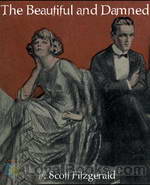 The Beautiful and Damned
The Beautiful and Damned
An idle, extravagant young man is the heir presumptive of his wealthy grandfather, an industrial tycoon. His wife, divinely beautiful and utterly selfish, believes that nothing is more powerful than her own beauty. Together, this couple represents what Fitzgerald famously portrayed as the lost generation of the Jazz Age in several of his novels. In The Beautiful and The Damned, F Scott Fitzgerald explores the trivial and shallow lives of the well-heeled inheritors of the American Dream the second or third generation that can afford to live on the fortunes that their forbears worked so hard to accumulate... | |
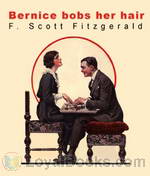 Bernice Bobs Her Hair
Bernice Bobs Her Hair
Pretty but socially clueless Bernice lets her know-it-all cousin push her around, but eventually, something's gotta give! (Introduction by BellonaTimes) | |
 Great Gatsby
Great Gatsby
Set in 1925, this is a novel of the Jazz Age; of ambition, of the careless rich, of wild parties and flappers and bootleg booze; and the efforts of a dreamer to reunite with his lost love. - Summary by Kara | |
By: F. Tennyson (Fryniwyd Tennyson) Jesse (1888-1958) | |
|---|---|
 Secret Bread
Secret Bread
| |
 The White Riband Or, a Young Female's Folly
The White Riband Or, a Young Female's Folly
| |
By: F. V. N. (Franklin Verzelius Newton) Painter (1852-1931) | |
|---|---|
 Elementary Guide to Literary Criticism
Elementary Guide to Literary Criticism
| |
By: F. W. (Francis William) Bain (1863-1940) | |
|---|---|
 Bubbles of the Foam
Bubbles of the Foam
| |
 The Substance of a Dream
The Substance of a Dream
| |
 An Essence of the Dusk, 5th Edition
An Essence of the Dusk, 5th Edition
| |
By: F. W. H. (Frederic William Henry) Myers (1843-1901) | |
|---|---|
 Wordsworth
Wordsworth
| |
By: Fanny Burney | |
|---|---|
 Evelina
Evelina
In this epistolary novel, we find a young woman named Evelina, who was raised in rural seclusion until her eighteenth year because of her uncertain parentage. Through a series of harrowing and humorous events that take place in London and an English resort town, Evelina learns how to navigate the complex layers of 18th century society and earn the love of a distinguished and honorable nobleman. This comedy of manners often satirizes the society in which it is set; Evelina is a significant precursor to later works by Jane Austen and Maria Edgeworth, whose novels explore many of the same issues. (from Evelina’s wikipedia entry, modified by ettelocin) | |
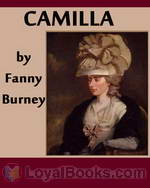 Camilla
Camilla
Camilla is Frances Burney's third novel. It became very popular upon its publication in 1796. Jane Austen referred to it, among other novels, in her novel Northanger Abbey:"'And what are you reading, Miss — ?' 'Oh! It is only a novel!' replies the young lady, while she lays down her book with affected indifference, or momentary shame. 'It is only Cecilia, or Camilla, or Belinda'; or, in short, only some work in which the greatest powers of the mind are displayed, in which the most thorough knowledge of human nature, the happiest delineation of its varieties, the liveliest effusions of wit and humour, are conveyed to the world in the best–chosen language... | |
 The Diary and Letters of Madame D'Arblay — Volume 1
The Diary and Letters of Madame D'Arblay — Volume 1
| |
 Brief Reflections relative to the Emigrant French Clergy
Brief Reflections relative to the Emigrant French Clergy
| |
By: Fanny Kemble (1809-1893) | |
|---|---|
 Records of a Girlhood
Records of a Girlhood
| |
 Records of Later Life
Records of Later Life
| |
By: Ferdinand Heinrich Grautoff (1871-1935) | |
|---|---|
 Banzai! by Parabellum
Banzai! by Parabellum
| |
By: Fergus Hume (1859-1932) | |
|---|---|
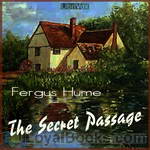 The Secret Passage
The Secret Passage
Excellent murder mystery. On September 9, 1905, the NY Times Saturday Review of Books described this book as follows: “That painstakingly ingenious person, Fergus Hume, has devised another of his hide-and-seek, jack-o’-lantern murder mysteries. It begins with a queer and rich old woman found stabbed to death in her chair and not a clue to the murderer. Then so many clues turn up that even the story-book detective is bewildered. Then nearly everybody turns out to be somebody else under an alias, and all the clues lead nowhere…” | |
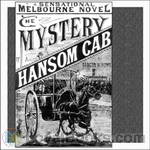 The Mystery of a Hansom Cab
The Mystery of a Hansom Cab
“The following report appeared in the Argus newspaper of Saturday, the 28th July, 18– “Truth is said to be stranger than fiction, and certainly the extraordinary murder which took place in Melbourne on Thursday night, or rather Friday morning, goes a long way towards verifying this saying. A crime has been committed by an unknown assassin, within a short distance of the principal streets of this great city, and is surrounded by an impenetrable mystery. … “On the twenty-seventh day of July, at the hour of twenty minutes to two o’clock in the morning, a hansom cab drove up to the police station in Grey Street, St... | |
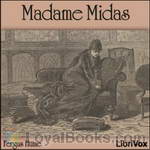 Madame Midas
Madame Midas
Madame Midas is a murder mystery, In the early days of Australia, when the gold fever was at its height. Fergus Hume was born in England, the second son of Dr James Hume. At the age of three his father emigrated with his family to Dunedin, New Zealand. He was admitted to the New Zealand bar in 1885. Shortly after graduation he left for Melbourne, Australia where he obtained a post as a barristers’ clerk. He began writing plays, but found it impossible to persuade the managers of the Melbourne theatres to accept or even read them... | |
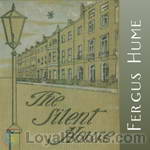 The Silent House
The Silent House
A mystery about a “locked door” murder committed in a house that has a reputation for being haunted. In the first half of the book, the murderer appears to be easy to figure out. The second half of the book, however, is filled with plot twists and mistaken identities and thus complicates the mystery much more. | |
 The Green Mummy
The Green Mummy
| |
 Bishop's Secret
Bishop's Secret
| |
By: Fernando António Nogueira Pessoa (1888-1935) | |
|---|---|
 Antinous: A Poem
Antinous: A Poem
| |
By: Finley Peter Dunne (1867-1936) | |
|---|---|
 Mr. Dooley: In the Hearts of His Countrymen
Mr. Dooley: In the Hearts of His Countrymen
| |
 Observations By Mr. Dooley
Observations By Mr. Dooley
| |
 Mr. Dooley's Philosophy
Mr. Dooley's Philosophy
| |
 Mr. Dooley Says
Mr. Dooley Says
| |
By: Fitz Hugh Ludlow (1836-1870) | |
|---|---|
 A Brace Of Boys 1867, From "Little Brother"
A Brace Of Boys 1867, From "Little Brother"
| |
By: Fitz James O'Brien (1828-1862) | |
|---|---|
 The Diamond Lens
The Diamond Lens
| |
By: Fletcher Gardner | |
|---|---|
 Philippine Folk-Tales
Philippine Folk-Tales
| |
By: Flora Ross Amos (1881-) | |
|---|---|
 Early Theories of Translation
Early Theories of Translation
| |
By: Florence A. (Florence Antoinette) Kilpatrick (1888-) | |
|---|---|
 Our Elizabeth A Humour Novel
Our Elizabeth A Humour Novel
| |
By: Florence Eveleen Eleanore Olliffe Bell (1851-1930) | |
|---|---|
 The Arbiter A Novel
The Arbiter A Novel
| |
By: Florence Finch Kelly (1858-1939) | |
|---|---|
 With Hoops of Steel
With Hoops of Steel
| |
 Emerson's Wife and Other Western Stories
Emerson's Wife and Other Western Stories
| |
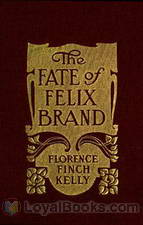 The Fate of Felix Brand
The Fate of Felix Brand
| |
By: Florence Henrietta Fisher Darwin (1864-1920) | |
|---|---|
 Six Plays
Six Plays
| |
By: Florence L. (Florence Louisa) Barclay (1862-1921) | |
|---|---|
 The White Ladies of Worcester A Romance of the Twelfth Century
The White Ladies of Worcester A Romance of the Twelfth Century
| |
By: Florence Louisa Barclay (1862-1921) | |
|---|---|
 The Rosary
The Rosary
He is a wealthy gifted and handsome young pianist who worships beauty. She is a woman blessed with a divine voice, but a less than beautiful appearance. He proposes, but she cannot believe that his love will last. A tragic accident results in his losing his eyesight. She hears about the accident and takes up employment as his nurse without revealing her identity. This forgotten, 1910 best-seller still holds the power to charm and delight the modern-day reader. One of the most poignant love stories ever written, The Rosary by Florence Louisa Barclay takes its title from the name of a song that was a chart-buster in the early twentieth-century... | |
By: Florence Morse Kingsley (1859-1937) | |
|---|---|
 An Alabaster Box
An Alabaster Box
| |
 The Transfiguration of Miss Philura
The Transfiguration of Miss Philura
| |
By: Florence Roma Muir Wilson (1891-1930) | |
|---|---|
 Death of Society: A Novel of Tomorrow
Death of Society: A Novel of Tomorrow
A weary survivor of the Great War, Major Rane Smith wanders in a great ennui amidst the mystical beauties of the fjords of Norway after the War, seeking a spiritual renewal. Deep in the forest he stumbles fatefully upon the strange, almost elvish home of Karl Ingman, an iconoclastic old Ibsen scholar. There Major Smith meets Ingman's two beautiful young daughters and his eldritch wife Rosa, entering into long days of profound dialogue with each member of the family. A rare and exquisite gem of... | |
 If All These Young Men
If All These Young Men
Another remarkable World War I novel by Romer Wilson, "If All These Young Men" is a character study of a group of young 20-something friends in England dealing with the looming, grey presence of the War in their lives. The story begins on Good Friday 1918, and centers on Josephine Miller, a restless, strong-minded young woman who cannot tolerate trivialities or frivolities so long as the War goes on, and who agonizes over how to go on living in its shadow. The characters of Josephine and her friends... | |
 Martin Schüler
Martin Schüler
Romer Wilson's first novel is a study in the life of Genius, a theme that would preoccupy her throughout her life. The eponymous Martin Schüler is a young German composer of genius in the years leading up to the Great War. His great passion is to create one magnificent work that will live forever. With his passions so consumed in his art, he makes sacrifices in his human relationships, going through a series of wrenching, unequal love affairs. The novel is of interest not only for Schüler's lifelong struggle to reconcile his fleshly desires with his lust for fame, but also for the Continental setting as Europe falls toward catastrophe. | |
By: Floyd Dell (1887-1969) | |
|---|---|
 King Arthur's Socks and Other Village Plays
King Arthur's Socks and Other Village Plays
| |
By: Floyd L. Wallace (1915-2004) | |
|---|---|
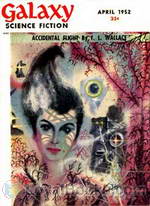 Accidental Flight
Accidental Flight
| |
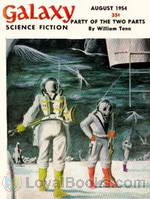 The Impossible Voyage Home
The Impossible Voyage Home
| |
 Forget Me Nearly
Forget Me Nearly
| |
 Student Body
Student Body
| |
 Second Landing
Second Landing
| |
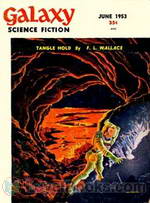 Tangle Hold
Tangle Hold
| |
 Bolden's Pets
Bolden's Pets
| |
 Mezzerow Loves Company
Mezzerow Loves Company
| |
By: Ford Madox Ford (1873-1939) | |
|---|---|
 The Good Soldier
The Good Soldier
The Good Soldier (1915) "... is set just before World War I and chronicles the tragedies of the lives of two seemingly perfect couples. The novel is told using a series of flashbacks in non-chronological order, a literary technique pioneered by Ford. It also makes use of the device of the unreliable narrator, as the main character gradually reveals a version of events that is quite different from what the introduction leads you to believe. The novel was loosely based on two incidents of adultery and on Ford's messy personal life.”Music in sections 1-5 "Minuet in G flat major and Valse Bluette" by Beethoven | |
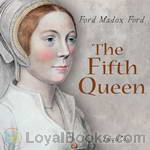 The Fifth Queen
The Fifth Queen
The Fifth Queen trilogy is a series of connected historical novels by English novelist Ford Madox Ford. It consists of three novels, The Fifth Queen; And How She Came to Court (1906), Privy Seal (1907) and The Fifth Queen Crowned (1908), which present a highly fictionalized account of Katharine Howard's marriage to King Henry VIII. | |
 Romance
Romance
| |
 Privy Seal His Last Venture
Privy Seal His Last Venture
| |
 The Fifth Queen Crowned
The Fifth Queen Crowned
| |
 Some Do Not...
Some Do Not...
Set immediately before and during the Great War, Some Do Not... is a tale of social cruelty among the English upper classes that pits real honour against shameless duplicity and subjects its principal characters to extremes of mental suffering that appear to be analogous to the physical horrors of the actual fighting. The plot revolves around the mores and desires of the intellectually brilliant but impossibly high-minded Christopher Tietjens, his icy wife Sylvia, and Valentine Wannop, a poor but well-educated young woman who loves Christopher, and is in many ways his moral and intellectual equal... | |
 No More Parades
No More Parades
When No More Parades was first published in 1925, a critic in The Observer wrote of the first 100 pages that they "easily surpass in truth, brilliance and subtlety everything else that has yet been written in England about the physical circumstances and moral atmosphere of the war". The second novel in the Parade's End tetralogy, No More Parades places army captain Christopher Tietjens, his beautiful but cruel wife Sylvia, and Tietjens' jealous and tempestuous godfather and commanding officer General... | |
 Man Could Stand Up
Man Could Stand Up
'A Man Could Stand Up' is the third, and culminating, part of Ford Madox Ford's 'Parade's End' tetralogy of novels, which begins with 'Some Do Not', followed by 'No More Parades', and whose coda would be 'Last Post'. While 'A Man Could Stand Up' can be appreciated on its own, it will make far better sense to a listener or reader already familiar with its predecessors. It's at once a war story , a story of immense upheaval in social mores, and a passionate, if extraordinarily restrained, love story. Just like, say, Virginia Woofe's 'Mrs Dalloway', published the previous year, Ford's novel is pitched at readers who are assumed to be highly literate and well-educated. | |
By: Forrest J. Ackerman (1916-2008) | |
|---|---|
 Out of This World Convention
Out of This World Convention
| |
By: Fr. Pierre-Jean De Smet (1801-1873) | |
|---|---|
 De Smet's Letters and Sketches, 1841-1842
De Smet's Letters and Sketches, 1841-1842
In 1841 and 1842, Fr. Pierre-Jean DeSmet traversed the wide and wild American West to bring the gospel to the Flatheads, who had sent multiple delegations from Montana to St. Louis, repeatedly requesting a Blackgown priest to instruct them in Christianity. Fr. DeSmet’s letters to his Jesuit Superiors show his heroic religious dedication and selflessness, as he recounts fatigues, hunger, thirst, and dangers that rival those of the apostle St. Paul. He also makes intelligent observations of geography, geology, weather , and the interesting customs of the different tribes he meets... | |
By: Frances Barton Fox (1887-) | |
|---|---|
 The Heart of Arethusa
The Heart of Arethusa
| |
By: Frances Bowyer Vaux | |
|---|---|
 Domestic Pleasures, or, the Happy Fire-side
Domestic Pleasures, or, the Happy Fire-side
| |
By: Frances Boyd Calhoun (1867-1909) | |
|---|---|
 Miss Minerva and William Green Hill
Miss Minerva and William Green Hill
| |
By: Frances Brooke | |
|---|---|
 The History of Lady Julia Mandeville
The History of Lady Julia Mandeville
Lady Julia, the daughter of the Earl of Belmont, and Mr. Henry Mandeville are falling in love. Though Henry is like a family friend, this love is not welcomed because the Lady Julia is promised to someone else (or so Henry thinks). When they discover that they can be together after all, it is much too late. This novel, written in the form of letters, as are a lot of 18th century novels, shows their beautiful and echoing love story through the eyes of many people. | |
By: Frances Burney (1752-1840) | |
|---|---|
 The Wanderer
The Wanderer
This is the fourth and final novel by Fanny Burney, the author of Evelina, Cecilia, and Camilla. "Who is "Miss Ellis?" Why did she board a ship from France to England at the beginning of the French revolution? Anyway, the loss of her purse made this strange "wanderer" dependent upon the charity of some good people and, of course, bad ones. But she always comforts herself by reminding herself that it's better than "what might have been..." This is not only a mystery, not at all. It's also a romance which reminds readers of novels by Jane Austen... | |
By: Frances Fuller Victor (1826-1902) | |
|---|---|
 The New Penelope and Other Stories and Poems
The New Penelope and Other Stories and Poems
| |
By: Frances Hodgson Burnett (1849-1924) | |
|---|---|
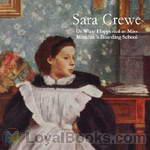 Sara Crewe: or, What Happened at Miss Minchin's Boarding School
Sara Crewe: or, What Happened at Miss Minchin's Boarding School
The story told in Frances Hodgson Burnett’s classic novel, A Little Princess, was first written as a serialized novella, Sara Crewe, or What Happened at Miss Minchin’s, and published in St. Nicholas Magazine, in 1888. It tells the story of Sara Crewe, an intelligent, wealthy, young girl at Miss Minchin’s Select Seminary for Young Ladies. Sara’s fortunes change when her father dies, and she goes from being a show pupil and parlor boarder at the school to a drudge, but eventually she finds happiness and a home again. | |
 The Lost Prince
The Lost Prince
“The Lost Prince” is about Marco Loristan, his father, and his friend, a street urchin named The Rat. Marco’s father, Stefan, is a Samavian patriot working to overthrow the cruel dictatorship in the kingdom of Samavia. Marco and his father, Stefan, come to London where Marco strikes up a friendship with a crippled street urchin known as The Rat. Marco’s father, realizing that two boys are less likely to be noticed, entrusts them with a secret mission to travel across Europe giving the secret sign: ‘The Lamp is lighted... | |
 The Shuttle
The Shuttle
Rosalie Vanderpoel, the daughter of an American multimillionaire marries an impoverished English baronet and goes to live in England. She all but loses contact with her family in America. Years later her younger sister Bettina, beautiful, intelligent and extremely rich, goes to England to find what has happened to her sister. She finds Rosalie shabby and dispirited, cowed by her husband's ill treatment. Bettina sets about to rectify matters. She meets Lord Mount Dunstan, an impoverished earl, who lives nearby and they fall in love, but he cannot speak because it would look as if he were after her money... | |